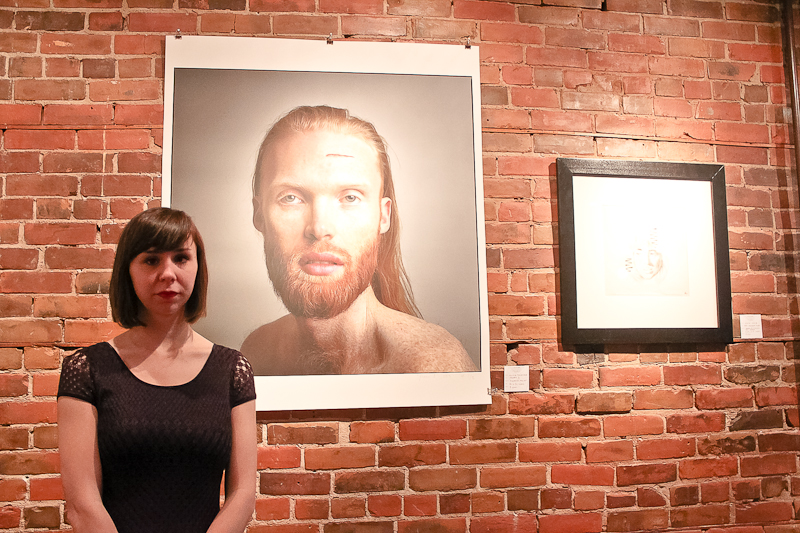
“The role of the female in society is complex and confused. Slung between assigned selves, she is often not able to take ownership of her life, her body, or her psyche. The navigation of identity throughout girlhood and into womanhood is a difficult process, affected a great deal by the confused role that society expects her to fill.”
Thus begins Carleton student Olivia Johnston’s curatorial statement for La Petite Mort’s latest exhibit, GAZE/ A Female Perspective.
Running for only a month from Jan. 3 – Feb. 2, the show slings together 11 female artists under the age of 30 who call Ottawa home, and asks them to pictorially comment on the pressures of being a young woman in a society where passive female flesh is capital.
Johnston’s interpretation of the female gaze is a positive one. She conceives of it as more of a remedial process than an actual theory of looking.
“For me the female gaze is a recovery project. History can’t be fixed. The idea now is to make more of an effort to give women and minorities the opportunity to speak,” she said.
The idea to curate an all-female show centred around the self-representation of cultural minorities was born out of Johnston’s own artistic practice.
Graduating from the School of the Photographic Arts: Ottawa in 2011, her photographic portraiture explores themes of identity and femininity, evident in her own contribution to the show: “Frans 1.”
In an attempt to fight fire with fire, Johnston’s “Frans 1” takes a tool commonly used on women in the media: Photoshop.
“People become entranced by the beauty of my photos. I like taking beautiful photos and I like my style but I wanted to interrupt the beauty with something a little unsettling,” Johnston explained.
“I took a regular photo but I used Photoshop to modify the face just a bit. I took the eyes from another photo, the face is smaller. I wanted to introduce a little bit of horror into the image. I wanted people to be compelled but put off.”
Johnston’s cut-and-paste approach results in a striking portrait that flirts with androgyny and the casual appropriation and mass production of the female form.
Other highlights from the show include Jennifer Stewart and Meredith Jay’s video installation “Fuck Gender Roles,” which uses analogue technology and nostalgia to question the lives of mothers and grandmothers, and their legacy today.
Despite being billed as an all-female show, Johnston said her main goal with GAZE was to subvert any clichés that came along with the title ‘contemporary female artist’ and expose a feminist truth: women are just people who aren’t necessarily feminists.
“I wanted to show that the women I know are not your Madonna or your whore or any of those assigned identities,” Johnston said. “They’re people that have fears and dreams and hopes and great talent.”
Kimberly Edgar, another artist participating in the show, shared Johnston’s sentiments about women artists subverting feminist imagery.
“I’m interested in people judging your work for the work and not for who you are,” she said.
Edgar, who usually exhibits anonymously, went on to explain her reasoning behind this sentiment.
“I have a painter friend that likes to use the colour red but because she’s a woman, it gets read as a period blood thing.”
Edgar’s piece in the show, “Lady Ant,” is an interactive paper mache sculpture that invites visitors to draw all over images of traditional female stereotypes.
The sculpture is a giant pink ant, challenging preconceived notions of what ‘belongs’ to boys and girls, since, as the artist points out, bugs are typically seen as ‘icky’ and an interest primarily for boys.
Perhaps it’s hasty to classify GAZE as a show that’s purely by and for women.
Instead of revealing great truths about the female psyche and condition, GAZE invites us to simply begin conceiving of different points of view. We all gaze. We simultaneously see and are seen.
“It’s not just the female gaze,” Johnston said. “It’s gaze in general—how we look at work and how we look at each other. How we use our own gaze to interpret the world.”





